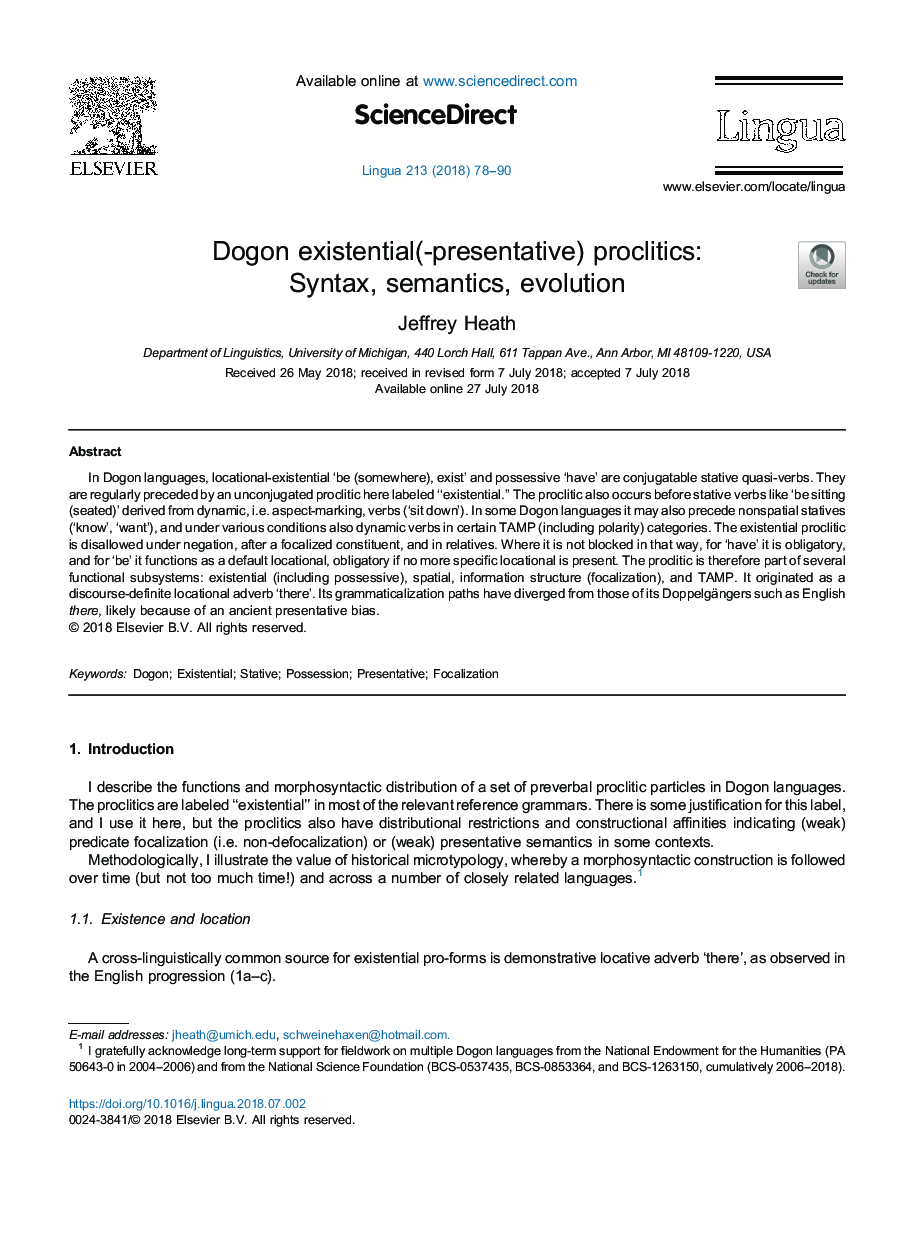| Article ID | Journal | Published Year | Pages | File Type |
|---|---|---|---|---|
| 10153597 | Lingua | 2018 | 13 Pages |
Abstract
In Dogon languages, locational-existential 'be (somewhere), exist' and possessive 'have' are conjugatable stative quasi-verbs. They are regularly preceded by an unconjugated proclitic here labeled “existential.” The proclitic also occurs before stative verbs like 'be sitting (seated)' derived from dynamic, i.e. aspect-marking, verbs ('sit down'). In some Dogon languages it may also precede nonspatial statives ('know', 'want'), and under various conditions also dynamic verbs in certain TAMP (including polarity) categories. The existential proclitic is disallowed under negation, after a focalized constituent, and in relatives. Where it is not blocked in that way, for 'have' it is obligatory, and for 'be' it functions as a default locational, obligatory if no more specific locational is present. The proclitic is therefore part of several functional subsystems: existential (including possessive), spatial, information structure (focalization), and TAMP. It originated as a discourse-definite locational adverb 'there'. Its grammaticalization paths have diverged from those of its Doppelgängers such as English there, likely because of an ancient presentative bias.
Related Topics
Social Sciences and Humanities
Arts and Humanities
Language and Linguistics
Authors
Jeffrey Heath,
